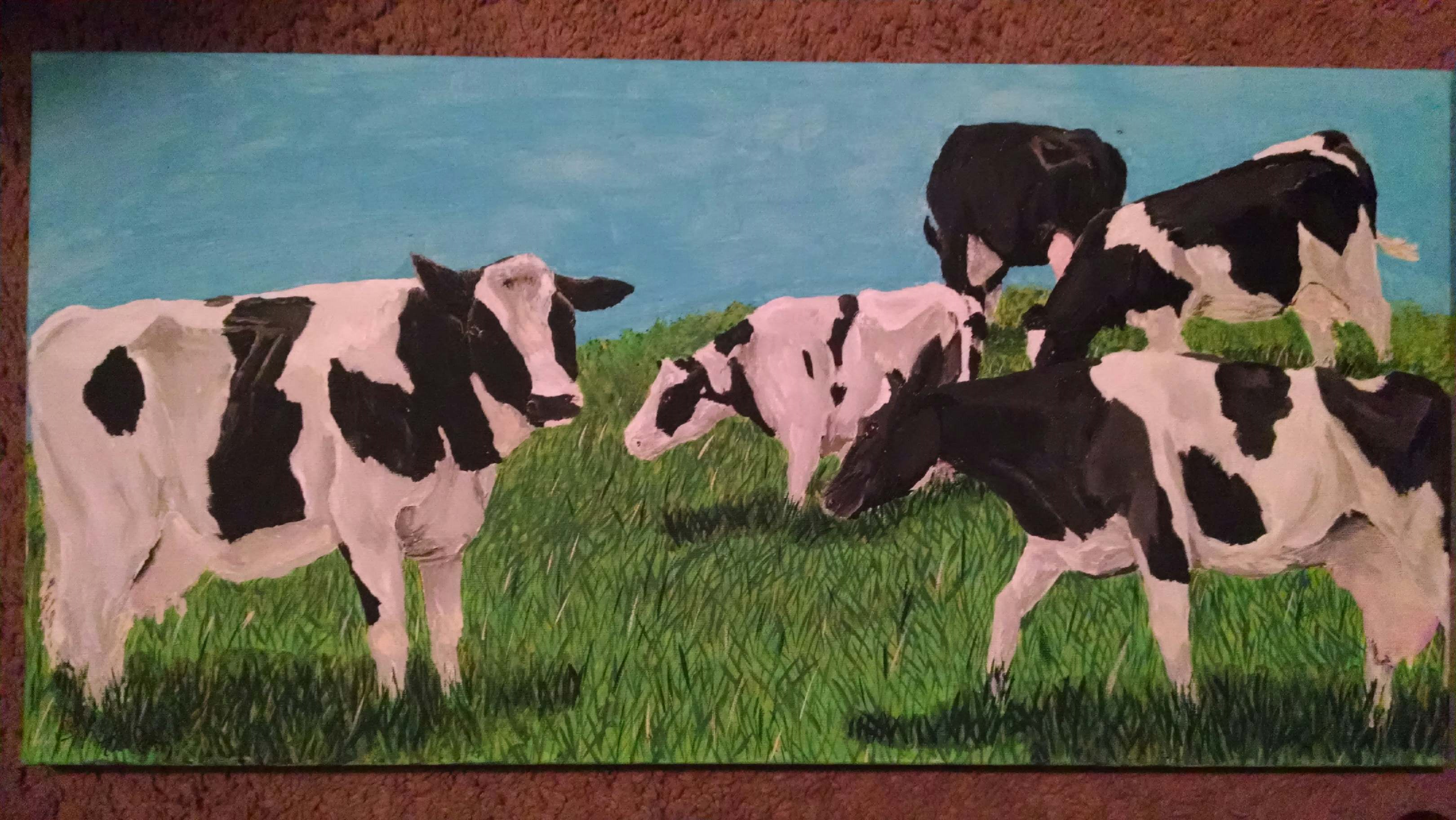Ashley E. Navarrette, Texas A&M University
Experiences, Entry
The massive yet vulnerable beast strained and made a sickening noise that was one of either pain or frustration or both. I looked down into the lead-up staring over her narrow made body and shuttered at the several possibilities that could end this event. “Guess the clean-up Charolais wasn’t such a good idea,” Billy said with a slight edge of sarcasm that wasn’t needed in this situation. I was about to agree with him, until a slight flash of red fur roped the words back into my voice box. She had a Shorthorn in her! She had an embryo transfer calf in her! The breaking news made us work as if in a theatre production. Within a matter of merely a minute and a few seconds we had the cold yet sterile chains running down the overly large front legs of what we hoped were from a calf and not some science fiction mutation that would put Cal Poly on the map for the wrong reason. She pushed and we pulled, both species’ muscles straining towards one common purpose. Two legs and their soft toes were forward and I was stunned to realize its legs shared the same circumference with that of my bicep. Our pulling continued, and with no help from a calf jack we realized we had hit a hurdle, the head that would belong to this massive beast.

What seemed like an eternity later, but in reality was no more than 15 minutes I was still hanging from the chains. One last push came and so did 135 pounds of calf. The calf shot out of the “vaginal cannon” and threw me onto my back. As my counterparts hurried the calf around to the cow’s head I ran to the truck for oxytocin in hopes that we wouldn’t have to treat this cow later for a retained placenta. Jumping from a gate with oxytocin in hand, a snap echoed up from my foot, rattling my ears, which must have been connected to the nerve triggering regurgitation. I felt the flow of fire rising, smoldering my veins and arteries on its way. I handed off the syringe and bottle to Billy as the peripherals of my vision began to roll and crash into my field of vision like waves licking the coastline. As my sight left me, the final vision was that of a red and white calf being cleaned by a narrow black cow. Then total blackness.
Click to read more ...
 Saturday, February 7, 2015 at 12:00PM
Saturday, February 7, 2015 at 12:00PM  "Eye See You"
"Eye See You" Cat,
Cat,  Photography,
Photography,  Western,
Western,  Western Uinversity in
Western Uinversity in  Creative Corner
Creative Corner  Cat,
Cat,  Photography,
Photography,  Western,
Western,  Western Uinversity in
Western Uinversity in  Creative Corner
Creative Corner 


